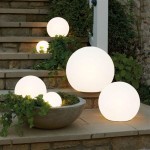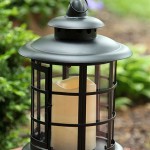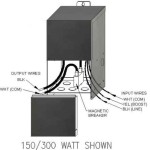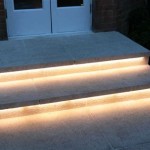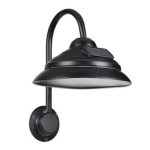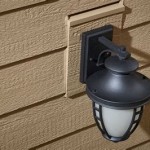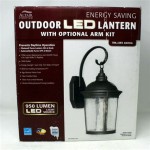```html
How To Make Your Own Cushions For Outdoor Furniture
Enhancing outdoor living spaces frequently involves upgrading furniture. While purchasing new outdoor cushions can be costly, crafting them offers a cost-effective and customizable solution. This article provides a detailed guide on constructing your own durable and aesthetically pleasing outdoor cushions.
Gathering Materials and Tools
The initial step involves acquiring the necessary materials and tools. The selection of appropriate fabrics and fillings is critical for creating cushions suited for outdoor use. Consider the durability, water resistance, and UV protection of the chosen materials.
Fabrics:
Outdoor fabrics, such as acrylic canvas (e.g., Sunbrella), polyester, and vinyl, are designed to withstand the elements. Acrylic canvas offers excellent resistance to fading, mold, and mildew. Polyester fabrics are generally water-resistant and durable, while vinyl provides a waterproof and easy-to-clean surface. Choose a fabric weight and texture that suits the intended use and aesthetic preferences.Fillings:
For outdoor cushions, closed-cell foam is generally preferred due to its water resistance. Options include polyurethane foam, which offers good support and comfort, and dryfast foam, specifically designed for outdoor use. Dryfast foam has an open-cell structure that allows water to drain quickly and air to circulate, preventing mold and mildew growth. Polyester fiberfill is another option, though it is less water-resistant than foam and may require more frequent replacement.Tools:
Essential tools include a sewing machine, fabric scissors, a measuring tape, a ruler or straight edge, pins, thread (specifically designed for outdoor use, such as UV-resistant polyester or nylon thread), a seam ripper (for correcting mistakes), and a zipper or velcro closure (optional).Additionally, consider acquiring a rotary cutter, a cutting mat, and pattern weights for more precise fabric cutting. A hot knife can be helpful for sealing the edges of synthetic fabrics to prevent fraying.
Measuring and Cutting Fabric
Accurate measurements are crucial for ensuring that the cushions fit the furniture properly. Measure the seating area of the furniture where the cushions will be placed. Add seam allowances to these measurements to account for the fabric needed to create the seams. A standard seam allowance is typically 1/2 inch to 1 inch, depending on the desired seam strength and fabric thickness.
After obtaining the measurements, create a pattern. This can be done using paper or cardboard. For simple square or rectangular cushions, the pattern will consist of rectangles with the measured dimensions plus seam allowances. For more complex shapes, such as curved cushions, trace the outline of the existing cushion or create a custom template.
Lay the pattern on the chosen fabric and secure it with pins or pattern weights. Use fabric scissors or a rotary cutter to cut out the fabric pieces, carefully following the pattern outline. Ensure that the fabric is cut accurately to avoid discrepancies in the final cushion size and shape. If using a patterned fabric, pay attention to pattern matching to ensure a cohesive and visually appealing result.
Assembling the Cushion Cover
The assembly process involves sewing the fabric pieces together to create the cushion cover. Begin by pinning the fabric pieces together, right sides facing. Ensure that the edges are aligned precisely to create neat and even seams.
Using a sewing machine, sew along the pinned edges with the chosen seam allowance. Backstitch at the beginning and end of each seam to secure the stitches and prevent unraveling. For added durability, consider using a double stitch or reinforcing the seams with a serger.
If incorporating a zipper or velcro closure, leave an opening along one edge of the cushion cover. Insert the zipper or velcro closure along this opening, following the manufacturer's instructions. Ensure that the closure is securely attached to the fabric and that it functions smoothly.
Before turning the cushion cover right side out, trim the seams to reduce bulk and create sharper corners. Clip the corners diagonally to allow for easier turning. Carefully turn the cushion cover right side out, pushing out the corners to create a crisp and defined shape.
Inserting the Cushion Filling
Once the cushion cover is assembled, insert the chosen filling material. If using foam, cut the foam to the appropriate size and shape, ensuring that it fits snugly inside the cushion cover. For fiberfill, gradually stuff the cover, distributing the filling evenly to avoid lumps and bumps.
When inserting the filling, take care to avoid stretching or distorting the fabric. Work slowly and methodically, ensuring that the filling is distributed uniformly throughout the cushion. Once the cushion is fully stuffed, smooth out the surface to create a consistent and comfortable feel.
For foam inserts, consider wrapping the foam in batting or muslin before inserting it into the cushion cover. This provides an extra layer of protection and can make the cushion more comfortable. Ensure that the batting or muslin is securely wrapped around the foam to prevent it from shifting or bunching.
After inserting the filling, close the opening using a zipper, velcro, or hand stitching. If using hand stitching, use a blind stitch to create an invisible closure. Ensure that the closure is secure and that the filling is fully contained within the cushion cover.
Additional Considerations for Outdoor Cushion Durability
To maximize the lifespan of outdoor cushions, consider implementing several additional measures.
Waterproofing:
While many outdoor fabrics are water-resistant, they may not be entirely waterproof. Applying a waterproofing spray or sealant can enhance the fabric's water resistance and protect the filling from moisture damage. Reapply the sealant periodically, as needed, to maintain its effectiveness.UV Protection:
Prolonged exposure to sunlight can cause fabrics to fade and degrade. Select fabrics with inherent UV resistance or apply a UV protectant spray to minimize fading. Store cushions indoors or cover them when not in use to further protect them from sun damage.Ventilation:
Adequate ventilation is crucial for preventing mold and mildew growth. Choose cushion designs that allow for airflow, such as those with mesh panels or breathable fabrics. Regularly inspect cushions for signs of moisture or mold and promptly address any issues.Cleaning and Maintenance:
Regular cleaning helps to remove dirt, stains, and debris, extending the lifespan of outdoor cushions. Follow the manufacturer's instructions for cleaning the specific fabric used. Generally, mild soap and water can be used to clean most outdoor fabrics. Avoid using harsh chemicals or abrasive cleaners, as these can damage the fabric. Allow cushions to air dry completely before storing or using them.By carefully selecting materials, accurately cutting and assembling the fabric, and implementing preventative measures, durable and comfortable outdoor cushions can be created at home. This not only offers a cost-effective alternative to purchasing new cushions but also allows for complete customization to match individual style and outdoor living space requirements.
```
Diy Outdoor Cushions A Erfly House

Diy Outdoor Cushions A Erfly House

Sew Easy Outdoor Cushion Covers Confessions Of A Serial Do It Yourselfer

Diy Outdoor Cushions A Erfly House
Make Your Own Outdoor Cushions A Beautiful Mess

How To Make Diy Outdoor Cushions Foamorder Com

Make Your Own Reversible Patio Chair Cushions It Love

How To Re Cover Outdoor Cushions A Quick Easy Diy Oh Yay Studio Color Painting Making Everyday Celebrating

Make Your Own Reversible Patio Chair Cushions It Love

Make Your Own Outdoor Cushions Diy Furniture Pallet
Related Posts
